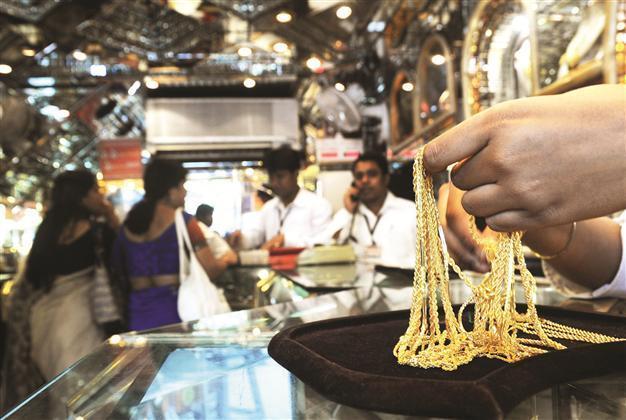Rivals squeeze Italian jewelers
VICENZA - Reuters

An employee arranges gold chains as customers browse in a jewelery shop in Calcutta, India. Italian jewelers are developing new techniques to continue competing with the low-cost rivals in China, India an Turkey, professionals say. AFP photo
Italian
jewelers are fusing the latest laser technology with traditional lace-making techniques in their efforts to ride out the economic downturn and keep up with growing competition from low-cost rivals in
China,
India and
Turkey.
The Italian jewellery industry used to dominate world markets but its market share has shrunk in the past decade, under pressure from cheaper rivals in India, China and Turkey. The unfolding eurozone debt crisis has dealt it a fresh blow.
“The way to overcome crisis is ... to be creative, innovative, to take risks, experiment with style, technologies and materials to come up with innovative products,” said Augusto Ungarelli, chairman of Italian jewelers association Club degli Orafi Italiani, speaking at a trade fair in northern
Italy.
Jeweller Lucio Presentini said his company, Neonero, began a few years ago to reproduce traditional Italian lace designs in gold, using lasers to create elaborate earrings and necklaces priced at 2,000-5,000 euros.
Neonero jewelery has conquered consumers from Hong Kong to eastern Europe and the Middle East and as demand has been exceeding current production, the company plans to increase its output this year, despite tough economic times, Presentini said.
“We have managed to unite the tradition of lace, with memories and emotions that it evokes, with technological innovation,” he said.
A return to deeply rooted artisan traditions of making jewelry, textile or mosaics as well as a revision of earlier styles and designs have helped Italian jewelers regain foreign markets recently, Daniela Invernizzi, a representative of the World Gold Council (WGC) in Italy, told Reuters.
Others bet on innovative technology. Goldsmiths Fratelli Bovo, for example, use sintering laser melting to fuse layers of gold powder to create fancy shaped pieces.
Tecnigold, a leading Italian producer of machine-made gold chains, uses the cutting-edge technology and process automation to reduce costs and stay ahead of rivals. Tecnigold which sells 60-65 percent of its output in Asia, hopes to see stable sales volumes in 2012 after a 15 percent drop in 2011.
Over the past 10 years Tecnigold has halved the weight of its gold chains to 2.5 grams on average as consumers become increasingly price-conscious, which was partly a reason for falling output volumes, chief executive Paolo Piotto told Reuters.
“We have to follow the market,” Piotto said.
Gold prices have been rising for 11 years in a row and the industry-funded WGC expects another year of a bull run for gold in 2012, despite a slowdown in the price rise so far this year.
In the meantime, many jewelers have been actively using steel, bronze, wood, ceramics and other cheaper materials.
